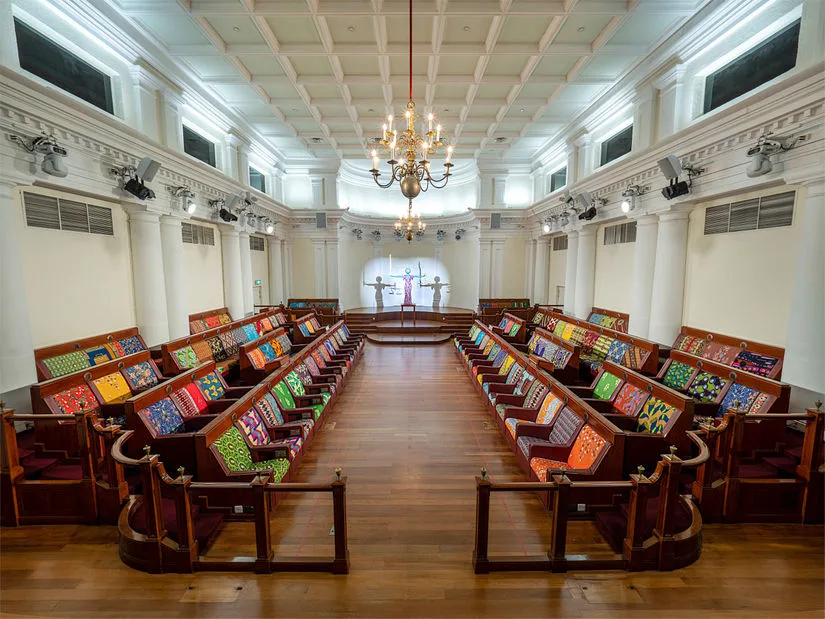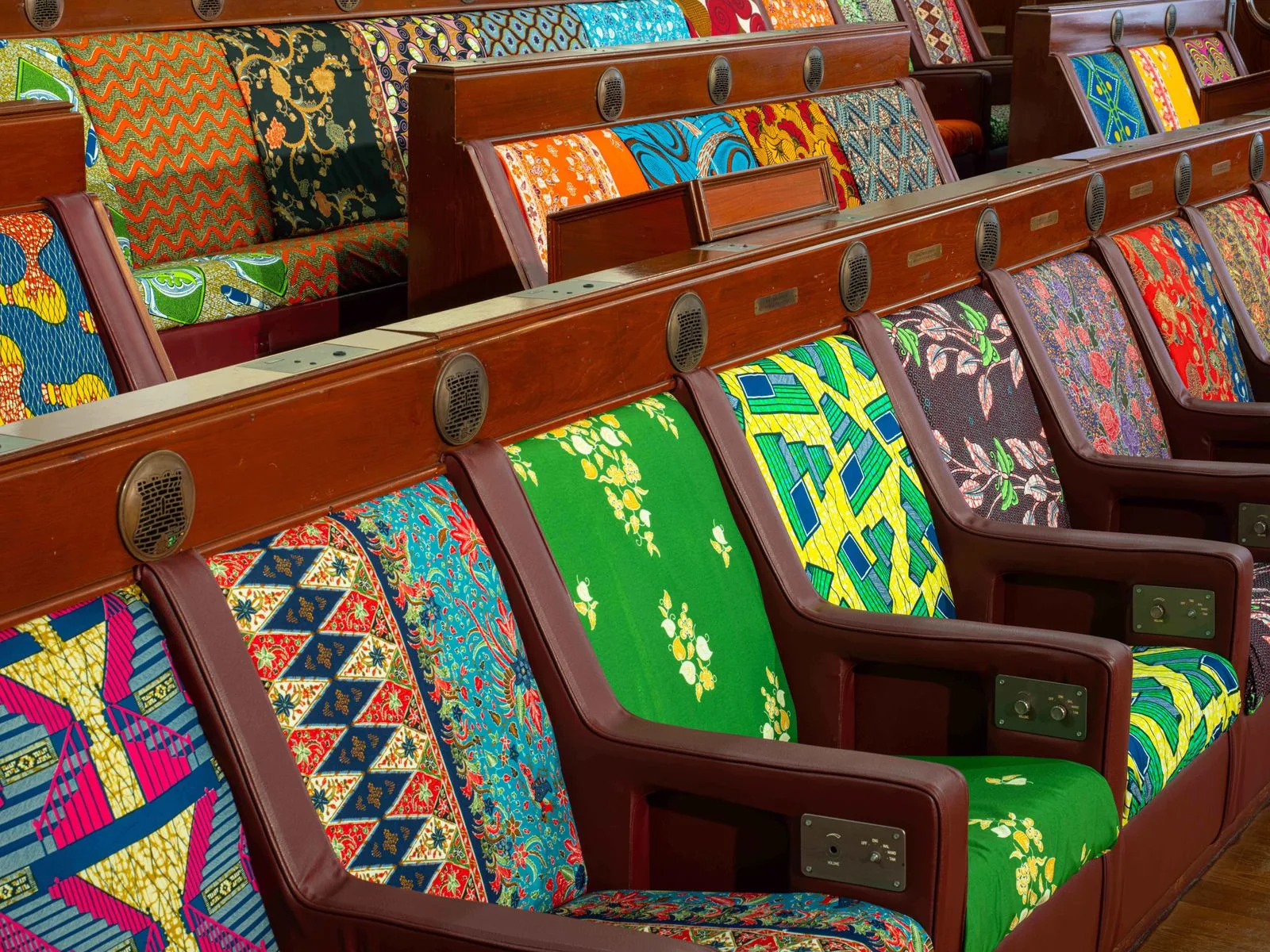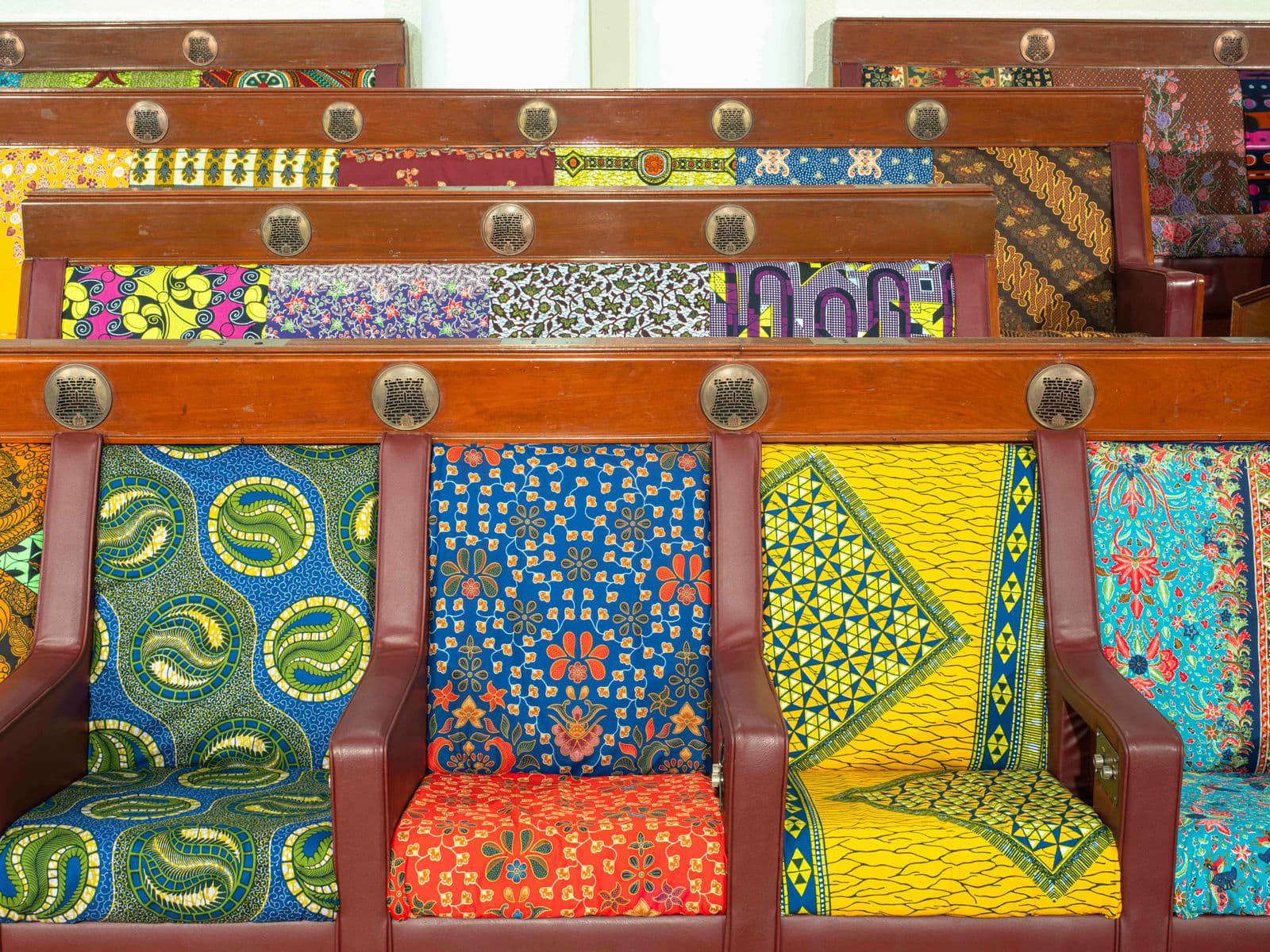The Asian Art Institutum, together with The Arts House and Stephen Friedman Gallery, London, are pleased to present 'Justice for All', an immersive, site-specific installation by acclaimed British-Nigerian artist Yinka Shonibare CBE, RA. The exhibition has been curated by Dr Zehra Jumabhoy, Courtauld Institute of Art, London, to coincide with Singapore Art Week and the Singapore Biennale 2020. Shonibare's work references the venue's own morphing heritage. In 1827, the building was rented by British colonial authorities for use as a courthouse, later it was turned into the Legislative Assembly. Finally, it was here that Singapore's first parliamentary session as a newly independent nation was opened in 1965 by then President Yusof bin Ishak.
Shonibare's monumental sculptural installation re-configures British sculptor F.W. Pomeroy's 'Lady Justice' (1905-1906), which stands upon the dome of London's imposing Central Criminal Court (otherwise known as The Old Bailey). Instead of her habitual golden garb, Shonibare's Singaporean Lady Justice is depicted wearing a brightly patterned, ankle-length garment, apparently fashioned from ‘African' batik. With both hands outstretched, Lady Justice wields a sword in her right hand and balances the scales of justice in her left. In place of a head, she sports a hand-painted globe, featuring a map of the world. Shonibare's oeuvre investigates notions of imperialist authority and power. Discussing the work with Dr Jumabhoy, the artist explains, "I was thinking about the idea of justice: Singapore itself is a very multi-cultural place. And I wanted a Justice figure that would be there to serve a wide range of the population; the different types of people in Singapore." Seducing us with its colour and beauty, Shonibare re-interprets Lady Justice for an interior setting, whilst retaining the dramatic impact of the original, iconic public sculpture.
Exploring cultural and racial identity, colonialism and post-colonialism, Shonibare is best known for his figurative sculptures clad in Victorian costumes made from Dutch wax batik, such as Vlisco. These patterns allude to the Dutch East India Company (also known as Vereenigde Oostindische Compagnie or VOC), which manufactured the fabric and sold it to the African market in the 19th century. In the 1960s, the fabric began to be feted as a marker of ‘authentic African identity' and was the favoured attire of anti-colonial nationalists. Yet, Shonibare's work deliberately undercuts ideas of authenticity and essentialism. His site-specific commission for Singapore does this with a South East Asian twist. Lady Justice's dress is transformed with the artist's uniquely designed signature Dutch wax batik patterns. However her body is painted-over with a motif gleaned from Javanese batik - the so-called ‘original' inspiration for the ‘African' prints. Javanese batik patterns were hybrid motifs; influenced by trade relations between the Dutch East Indies, Malaya, India and China. Identity, Shonibare's work shows us, is never fixed; it is invariably multi-cultural. Shonibare notes, "I started using batik in my work to explore the relationship between Africa, Europe and Asia. I take icons of colonial power and I deconstruct them." In Singapore's Old Parliament House, Lady Justice comes full-cycle: once an emblem of colonial dominance, she becomes a cipher for trade, global exchange and the spirit of a multi-racial Singapore. The globe which replaces the head of Lady Justice symbolises how (in Shonibare's words) "she is a figure in which the aspirations of all the different people are embodied."
Shonibare's films 'Odile and Odette' and 'Un Ballo in Maschera (A Masked Ball)' will be shown at The Arts House at intervals throughout the day for the duration of the exhibition.






